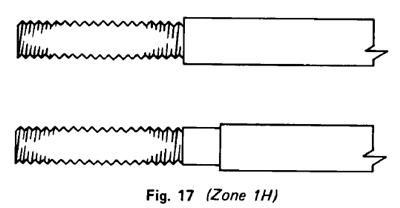Castor or caster.
Increased Caster
More caster will improve on-center "feel" and make the car track better. In other words, it will go straight ahead with hands off wheel -- without wandering. This will make the steering effort heavier, but the 1200 is arguably too light in this area to start with, so no worries.
More caster will also give the car a negative camber change while cornering, which is desirable.
Increase caster up to 3 degrees for a street 1200. Use at least 2 degrees for good tracking. Stock specification is as low as 0 degrees 20 minutes, which makes the 1200 wander on the road.
Increase caster up to 4 degrees for racing. The tension rods may be modified to provide an increase in caster. See Datsun 1200 Competition Suspension Manual
See discussion Negative Camber (Page 2, for caster)
- To increase caster, shave the Tension Rod bushings and pull the wheels forward
- To decrease caster, insert spacers (washers) on the tension rod
Another way to use adjustable radius rods.
See main article: Custom Caster Rods
Datsun Competition
Tension Rod and Bushing ModificationHigh speed stability can be enhanced by increasing the caster. On a Datsun 1200, this is accomplished by remachining the tension rods .600 of an inch as shown in Fig. 17. This shortens the rod and pulls the bottom of the strut foreward to obtain approximately 4° of additional caster.
The stock tension rod rubber bushings are too soft for competitive use. Replace them with two Balkamp (NAPA) motor mount rubbers, part number 3-5121. The Balkamp rubber bushings have an outside diameter of 1.5-inches and a thickness of .850 inch. The only modification needed is to enlarge the center hole for 3/8-inch to 5/8-inch (Fig. 18). When installing the rubber bushings on the modified tension rods, use all the stock washers and spacer sleeve.

![[Datsun 1200 encyclopedia]](/wiki/upload/wiki.png)
